"John, this is my memory version of the battle. I'm sure you and the others can add much more" Account written by Thomas Hancock, the B-17 pilot. My father John E. Butler was the Flight Engineer. Submitted by Gary Butler.
The crew was first joined at a replacement depot in Salt Lake City, Ut in early 1944. We went through combat crew training in Ardmore OK and were subsequently assigned to the 5th Bomb Wing ,2nd Bomb Group, 20th Squardron in Foggia, Italy. There we went through all the trials of combat in raids over Germany, Austria, Czechoslovakia, Russia, Hungary, Bulgaria, Greece, Albania, Italy and France. The crew made five raids over the devastating battle area of Ploesti,(the Ploesti oil fields) in Rumania. It was on our last raid that the event occurred that brought us to our moment of truth.
On July 9, 1944 the crew took off and joined the formation that made up part of the bomber stream headed for Ploesti. Because we were late out of briefing, we had to postpone our pre-mission prayer until after we were airborne and in position. As part of our in-the-air- preparations for combat, parachutes were hung by one clip to their harnesses, (in case the aircraft blew up we would still have a parachute attached to our harness). Pieces of armor plate, scrounged from the scrap heaps were placed in strategic places for maximum protection,( Which was totally against Air Force policies because it had been removed from all of the aircraft in the 15th Airforce to permit carrying heavier bomb loads). Guns were checked and test fired when the order to test came from the group leader. First Aid Kits were broken out and laid in convenient locations. Extra ammunition boxes were relocated for instant access by the gunners and flack suits and helmets were placed nearby to be put on when the heavy flack areas were encountered.
This mission was going to be a maximum effort in another attempt to stop oil production at the Ploesti refineries and all planes were loaded to the maximum possible fuel and bomb loads. All pilots and crews were warned to stay with the formation and to try and to drop their bombs with the leaders. In addition we were discouraged from dropping out of formation for any minor problem and returning to the home base.
The mission started out as most other missions as being fairly routine and the chatter on the intercom was relaxed in the early portion of the trip out to the target--mostly to keep spirits up and relieve the tension and fears of what we all knew was ahead of us. Then suddenly we lost compression on number 2 engine. Even though I as the pilot tried every trick and action I had been taught or gleaned from other's experiences, the engine still would not regain its normal performance level and was just barely carrying its own weight, thus throwing a heavy load on the remaining 3 engines. I increased the power on the other engines and tried to stay with the formation. It was a struggle and required every bit of skill I possessed to stay in position especially as we were still climbing to bombing altitude. We all held our breath and prayed constantly that the other engines would handle the load because we were now deep in enemy territory and German fighters were in the area. To return to base alone through enemy territory was almost sheer suicide.
The tension mounted among the crew and that heightened their efforts to see even beyond their physical capabilities, trying to sight the enemy planes that were cruising up and around the bomber stream, not yet starting their deadly attacks. The time seemed to drag forever and the navigator was constantly bring asked to define our position and provide ETA's to the target area. Our nerves were at the screaming point when disaster struck just as we turned on the IP ( Initial point from which the bomb run began and by far the most critical part of the mission when every plane flew straight and level to the bomb release point). The flack was coming so thick a person could walk on it and the fragments rattled the skin of the aircraft and moaned and squealed a they passed through the plane. The flack suits and helmets provided some feeling of security but everyone knew that many people had been killed and wounded when the fragments went through them like so much butter. It was just before the bomb release point that the number 3 engine lost power and the change in the volume of the engines roaring was shattering to our composure, if we ever had any. Frantically the remaining two engines were pushed to and beyond their performance limits in an effort to remain with the formation--all in vain. Gradually the distance between the group and our plane widened and we knew we were doomed. The bombardier stayed with his bomb sight until the bombs were finally dropped on target and then closed the bomb bay doors as quickly as possible to reduce their drag, but it wasn't possible now to catch the group. Besides the groups that were following would soon drop their bombs on us if we didn't get out of their way. We had only one possible option left for us to try and survive this mission.
I saw our group pulling away from us to the Rally point(the point at which all planes in the formation headed before turning back towards home.) I knew if we could cut across from where we were, I might be lucky and be able to catch the formation as they were returning and if they knew I was in trouble, they would slow down enough for me to keep pace with the formation. I broke from the bomber stream and headed across the abyss of unprotected sky. Then the real battle started. The first warning we had was when the bombardier opened up with his chin turret guns with the thundering barrage and suddenly it seemed that the world had opened up with the noise of Hades around us and German ME_109's filled the sky around us, each one trying to deal the death blow to us. I twisted and turned the aircraft in every way possible, diving and zooming up, trying to provide the hardest possible target for the enemy. The aircraft was constantly being hit and holes appeared like magic in the wings and the fuselage. Each bullet banging as it passed through. The guns were thundering and the ship quivered from the vibration and strain of the damage and the fighting defence. A Me-109 flew across in front of the windscreen and the red-bearded pilot was looking directly at the cockpit area when the turret gunner cut the plane half just behind the pilot. The intercom was alive with the screams of the gunners as they sighted planes coming in at us and returned their fire, bullet for bullet. We were partially protected at the tail by the sharpshooting tail gunner who was manhandling a large 20mm gun that had been installed there experimentally. As a plane would try for a deadly tail-on attack, he would wait until they were withing range of his gun and would open fire on them. The surprised enemy pilot would suddenly break of the attack and would try for another angle. They finally found one weak spot as an ME-109 attacked from behind and below the aircraft, raking the entire fuselage from one end to the other with cannon fire. One shell exploded between the two waist gunners wounding them in the legs. True to their courageous nature they pulled each other up off the deck, grabbed the control cables overhead with one hand each and continued to fire their guns even though they were both very badly wounded and were bleeding heavily. The ball turret gunner, intent on tracking a plane coming from below and ahead of the aircraft , was wounded when a cannon shell exploded near his face when it hit his gun sight, rendering the turret useless. The next shell exploded right under the flight deck with a thundering roar severing all the control cables except for the pilot's controls and damaging even them, destroying the radios, the autopilot and the numerous components under their seats. The navigator was blown forward into the bombardier and his flack suit saved both their lives as the fragments were mostly spent against the metal plates. They did not escape unscathed as they found when they started firing again and the blood bothered their efforts to fire the guns. The top turret gunner was hit in the knee and was knocked out of his turret but he climbed right back in again and the roar of the top turret was soon heard again. By some miracle, the parachutes that had been so carefully slung from the parachute harnesses by the pilot and the co-pilot absorbed the bulk of the fragments that went upwards toward the flight deck. Some were stopped by the armor plate chunks under their cushions and the balance hit them in the legs but such was the intensity of the battle, but they never even knew they were hit. Now the plane was very difficult to control and the evasive tactics were much slower and more erratic as the riddled controls could not respond with their former crispness. Even the radio gunner whose gun was often considered as an after thought by the designers, became a valuable weapon in the battle. As a plane crossed the tail, above the tail gunner, he tracked it and riddled it with holes so that it broke away from the danger. It was getting close to the end and we knew that it was just a matter of moments until a fatal blow fell on the plane and its frightened crew. Prayers were screamed and whispered but still the safety of the returning bombers stream was still an eternity away and seemed to be getting farther away. Then suddenly our prayers were answered.
Suddenly the most beautiful sight in the world appeared. A flight of P-38 escort fighters crossed the windscreen and the attacking ME-109's disappeared and the crew screamed and cheered for joy. The silence was deafening as the guns went silent. Then the struggle to return home began.
The radio gunner rushed back and began to put tourniquets on the legs of the waist gunners who had now collapsed on the deck. Shortly he was joined by the tail gunner who went forward and began to try and get the ball turret gunner out of his turret. The engineer put a bandage around his knee and went aft to help with the wounded. The copilot, now idle because his controls were gone, also went back to help. The navigator and bombardier dressed each others wounds and then went aft to help. It was only later that the tail gunner and radio gunner discovered their own wounds.
I grimly headed for the bomber stream hoping to reach the safety of their numbers before a new group of enemy fighters attacked once more. Almost miraculously I spotted the tail markings of my own squadron and flew to join them. They saw me coming and slowed down to let us join up. In my haste I almost flew through the formation but gradually I got the bird under control and into the very middle of the group. I was still flying on just two engines, somehow by some miracle those two engines were not touched during the battle at least so it seemed at that time. The number of holes in the fuselage and wings was enormous. Now the crew heating systems were gone and members who were not so seriously wounded stripped their clothing off to keep the wounded warm. The vials of morphine were soon exhausted and the long wait home began. The oxygen system was soon gone having been hit in a number of places by fragments and I was forced to leave the safety of the formation and dive to a lower altitude to provide oxygen to the crew. As the plane droned on, the wounded would ask how soon before we returned to base and even though it was several hours, we would tell them it was an hour ,a half-hour, 15 minutes etc. thus making the wait for them more endurable.
Then the flight engineer noticed an ominous sign. Black oil was weeping around the cowling of the number 4 engine and the stream became more pronounced as we droned ahead. Finally, we crossed the Yugoslav coast of the Adriatic Sea and home base was just an hour away on the Italian coast. It was at that precise moment that number 4 engine gave up the ghost and began to windmill uselessly in the forward airstream. Running on only one engine, with the useless engine windmilling reduced our chance of making it to almost zero. I looked at the engineer and we both decided to try and get one of the other engines started again-a one in a million- chance. We tried number 2 without success and then tried number 3. By some miracle, the engine slowly rumbled and gradually increased in speed and finally caught and began to take up more of the load. Finally we stopped losing altitude and were able to climb a bit more so we were no longer skimming the waves. It was useless to try to feather the prop on the windmilling engine because it was completely out of oil and the vibration was almost tearing it out of the wing as the engine slowly tore itself apart inside. We fought to keep the airplane in the air and somehow that struggle made the time past faster and suddenly we were over the Italian coast and the base was in sight some distance away. We could see the returning group circling to land ahead of us.
We were within sight of the field when number 3 finally gave up and the fuel pressure on that engine dropped to zero. We did not have enough height to make the field on one engine and we were almost frantic in our efforts to get the engine started again. I prayed with all my heart and soul and miraculously the fuel pressure gauge on number 3 engine began to rise and it roared back to life sufficiently to make the field. As we got within visual range of the tower the engineer began to fire flares, red ones, blue ones, green ones, anything that would fire to warn them of our approach. In the meantime the copilot was cranking down the gear by hand and resumed his seat on the final approach, warning everyone to belt down or grab hold of something in the event of a crash landing. We hit the ground hard and the gear held up but then we had to stop. The copilot hit the emergency brakes and they held only for a moment sufficient to send the aircraft into a wrenching ground loop, well clear of the active runway. WE WERE HOME !!!
The ambulances were at the doors immediately and we bailed out before anything else could happen, helping carry put the wounded and turning the armed gun controls off so no one would get hurt by accidentally firing fifty caliber machines guns. The surviving crew members stared at the plane looking with disbelief at the number of holes in the aircraft. We later counted almost 4000 holes. I turned and headed for a vehicle to take me to the debriefing hut and it was then that I noticed the squishing feeling in my flight boot. It was blood from leg wounds. We had gone out , gave it our best against their best and had made it back alive with the entire crew. Unfortunately though the two waist gunners each lost a leg from their wounds. The tail gunner, the flight engineer, the radio man, the copilot, the bombardier and navigator survived to fly again. The ball turret gunner was so badly wounded he never flew again.
However this was not the end of the story. About ten days later I was standing in line at the Foggia Red Cross waiting to get a glass of lemonade and a doughnut. I was standing behind two young pilots who were obviously fighter pilots. They were discussing some of their previous missions and after a while I was aware that they were discussing an air battle that they had witnessed a few days before. As I listened I became very interested because it was obvious to me that they had witnessed our own battle over Ploesti. I asked them a few questions as to the date and location and what their part had been in the battle. To my surprise they told me this story...
This particular fighter group had been assigned to fly escort for the B-17's and B-24's over Ploesti area because their P-38 aircraft had the range required to go the farthest out to stay the longest over the target area. They had just completed their required time over the target and when the new escort group arrived they headed for home base. The particular pilot I spoke to had been leading the flight. As they turned home, he heard a distinct voice say, "Turn Back!!" He looked around wondering who had broken radio silence in his flight. He ignored it, intending on returning to base. He heard it again, "Turn Back!!" Again he ignored it. He then heard it a third time much louder "Turn Back!!". This time he turned the flight around just to satisfy his own curiosity and there ahead of him was our aircraft. We were being circled by a swarm of ME-109's, twelve in all and they were pressing home their attacks with a vengeance. He saw five of them shot out of the sky in those few moments and then they dove to the attack driving the remaining fighters away shooting down two more in the process. They never saw the B-17 again but they were sure from the damage that the plane never made it back. When I told him I was the pilot of the plane , he shook his head in disbelief until I offered to show him the actual plane. It was proof to all of us that our prayers were truly answered on that day.
Much later I heard from my mother that she had awakened in the night with a terrible feeling of dread and fear for my life. She awakened my father and the two of them spent the rest of the night on their knees on prayer for my deliverance from whatever was happening to me.
Now the crew is meeting again for the first time since the war. Two of the crew are now deceased, the copilot and the ball turret gunner. The wives of the living and dead will also be there. In addition I am attempting to locate the pilots of the P-38's that saved our lives and with he help of the Luftwaffe ,we are trying to locate some of the German fighter pilots who flew against us on that trip to Ploesti. Additionally the Boeing Company will be sending a representative to make a presentation to the crew at that reunion. We are trying to get the Confederate Air Force to send a B-17 to Chicago at that time for the crew members to go through once more. With God's help, we will be able to get all of these things done because this may be the last time we will all be able to be together again.
Written by-Thomas Hancock
John Ephriam Butler b. 11/23/22 d. 7/21/99 was the 5th son of Tom & Lydia Butler. He graduated from Grayson High School, 1939 and joined the US Army Air Force 1942.( Uncle Mac and my father graduated in the same class at Grayson.)
Floy N. Butler b.11/25/21 graduated from Snellville High School in 1939. My parents were married in Gwinnett Co Ga. Dec.,1943. During the war she worked for Bell Aircraft Corp. in the production of B-29 Superfortress which contributed greatly to the winning of the war.
Children: John Gary Butler , graduated from Georgia Tech 1967, Harvard AMP 1991, retired from Bellsouth after 34+ years. m. Judy M. Butler , graduated from Cross Keys High School,1964. Daughter-Kimberly Keever, graduated from Georgia Tech 1967 m Steven Keever, graduated from Wingate College.
Benjamin Keever , Annabel Keever , Rachel Keever
Daughter-Elizabeth Witter graduated from Duke University 1993, NYU Law School 1996 m Brett Witter graduated from Duke University. In 2008 Brett had a book that was on the NYT Best Seller List for several weeks. __ Dewey,The Library Cat___
Lydia Witter , Isaac Witter
Linda D. Medrow graduated from Georgia State University 1969, m Michael Medrow graduated from FSU. Linda retired from Cobb County schools.
Son-John Medrow attends FSU and plays in the FSU marching band.
Donald Wayne Butler graduated from Georgia State in 1979. He works in IT for Accenture. m. Jennette Butler who works in HR for AT&T.
Son- Daniel Butler works as a chef in Atlanta, Ga. Son- Jared Butler Studying to be a chef in Atlanta Ga.
Subscribe to:
Post Comments (Atom)
















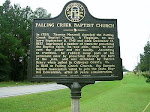
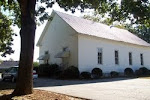



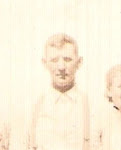
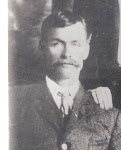


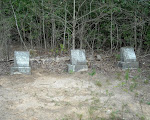


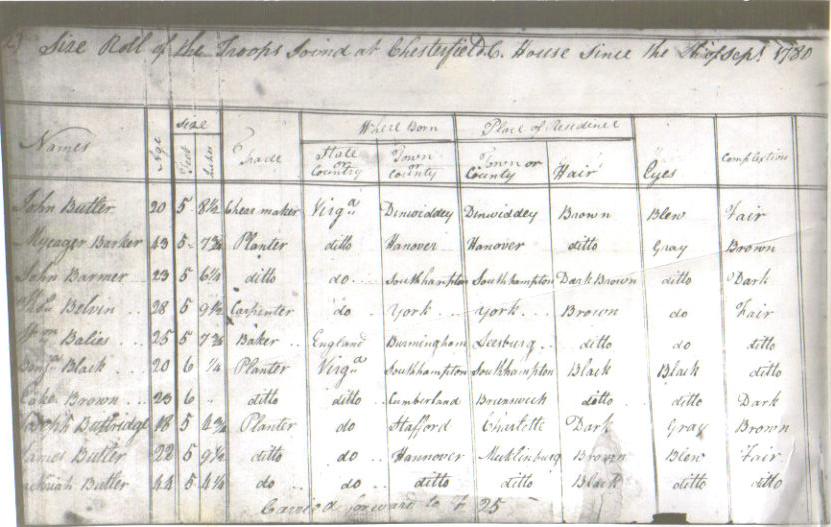
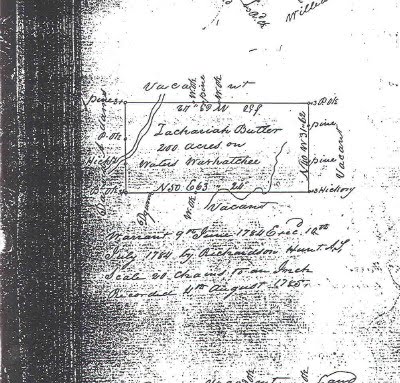

1 comment:
wow!
Post a Comment